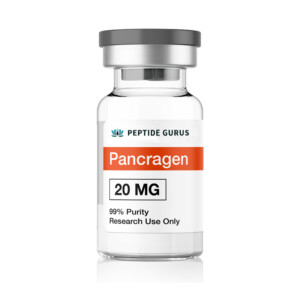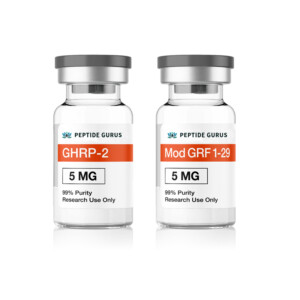High purity peptides have become a cornerstone in the field of biotechnology, offering unparalleled precision and effectiveness in various applications. These peptides, known for their exceptional purity levels, are synthesized through meticulous processes that ensure minimal contamination and maximal efficacy. The demand for high purity peptides is driven by their crucial role in research, therapeutics, and diagnostics, where even the slightest impurity can lead to significant deviations in results. As such, the production of high purity peptides involves advanced techniques such as solid-phase peptide synthesis (SPPS), which allows for precise control over the sequence and purity of the peptide.
The importance of high purity peptides extends beyond their immediate applications. Their purity directly influences the reliability of experimental outcomes, making them indispensable in scientific research. In therapeutic applications, high purity peptides are used to develop treatments with fewer side effects and enhanced effectiveness. The pharmaceutical industry, in particular, benefits from these peptides, as they are integral in the development of peptide-based drugs. Moreover, high purity peptides are essential in diagnostic assays, where their precision ensures accurate detection and measurement of biomarkers.
Understanding the synthesis of high purity peptides is crucial for appreciating their value. Solid-phase peptide synthesis (SPPS) is a widely used method that involves the sequential addition of amino acids to a growing peptide chain anchored to a solid support. This method allows for the rapid assembly of peptides with high fidelity and purity. The process is typically automated, which enhances reproducibility and scalability. Advanced purification techniques, such as high-performance liquid chromatography (HPLC), are employed to achieve the desired purity levels, ensuring that the final product is free from contaminants and by-products.

Quality control is a critical aspect of producing high purity peptides. Each batch undergoes rigorous testing to ensure that it meets the stringent purity standards required for its intended application. Analytical techniques such as mass spectrometry and nuclear magnetic resonance (NMR) spectroscopy are used to verify the molecular weight and structural integrity of the peptides. These methods provide detailed information about the peptide’s composition, confirming that it matches the intended sequence and is free from impurities.
The applications of high purity peptides are vast and varied, encompassing fields such as drug development, biochemical research, and clinical diagnostics. In drug development, these peptides are used to create novel therapeutics that target specific pathways and receptors with high precision. Their ability to mimic natural peptides and proteins makes them ideal candidates for developing treatments for conditions such as cancer, diabetes, and infectious diseases. High purity peptides are also used as tools in biochemical research to study protein interactions and functions.
In the realm of clinical diagnostics, high purity peptides play a pivotal role in the development of assays that detect and quantify biomarkers associated with various diseases. These assays rely on the specificity and sensitivity of peptides to bind to target molecules, allowing for accurate diagnosis and monitoring of disease progression. The high purity of these peptides ensures that the assays produce reliable and reproducible results, which are critical for making informed clinical decisions.
The future of high purity peptides looks promising, with ongoing advancements in peptide synthesis and purification technologies. Researchers are continually exploring new methods to enhance the efficiency and cost-effectiveness of peptide production. Innovations such as microwave-assisted SPPS and flow-based synthesis are being investigated to reduce synthesis times and improve peptide yields. Additionally, the development of novel purification techniques aims to achieve even higher purity levels, expanding the potential applications of these peptides.
Environmental considerations are also becoming increasingly important in the production of high purity peptides. The traditional methods of peptide synthesis often involve the use of hazardous solvents and reagents, posing environmental and safety challenges. As a result, there is a growing interest in developing greener synthesis methods that minimize the use of toxic chemicals and reduce waste generation. These efforts not only make peptide production more sustainable but also align with the broader goal of reducing the environmental impact of biotechnological processes.
The global market for high purity peptides is expanding rapidly, driven by the increasing demand for peptide-based therapeutics and diagnostics. North America and Europe currently dominate the market, with significant investments in research and development. However, emerging markets in Asia-Pacific are also witnessing substantial growth, fueled by the rising prevalence of chronic diseases and the increasing focus on personalized medicine. As the market continues to grow, it presents numerous opportunities for companies specializing in peptide synthesis and purification.
Challenges remain in the production and application of high purity peptides, particularly in terms of cost and scalability. The synthesis of long and complex peptides can be expensive and time-consuming, limiting their accessibility for certain applications. However, advances in automation and process optimization are helping to overcome these challenges, making high purity peptides more accessible to researchers and clinicians. Additionally, collaborations between academia and industry are driving innovation in peptide synthesis and application.

The regulatory landscape for high purity peptides is evolving, with stringent guidelines in place to ensure the safety and efficacy of peptide-based products. Regulatory agencies such as the FDA and EMA have established specific requirements for the characterization and quality control of peptides used in therapeutics and diagnostics. Compliance with these regulations is essential for companies looking to commercialize peptide-based products, necessitating a thorough understanding of the regulatory framework and the ability to meet these standards.
In summary, high purity peptides are vital components in biotechnology, offering unmatched precision and effectiveness across various applications. Their synthesis involves sophisticated techniques to ensure the highest levels of purity, which is crucial for their performance in research, therapeutics, and diagnostics. As the demand for high purity peptides continues to grow, ongoing advancements in synthesis and purification technologies are set to enhance their availability and broaden their applications. The future of high purity peptides is bright, with the potential to revolutionize fields such as personalized medicine and targeted therapeutics.
The role of high purity peptides in personalized medicine is particularly noteworthy. Personalized medicine aims to tailor treatments to individual patients based on their genetic makeup and specific disease characteristics. High purity peptides, with their ability to precisely target specific pathways and receptors, are ideal candidates for developing personalized therapies. These therapies offer the potential for improved efficacy and reduced side effects, as they are designed to address the unique needs of each patient.
In targeted therapeutics, high purity peptides are used to deliver drugs directly to specific cells or tissues, minimizing off-target effects and enhancing treatment efficacy. This approach is particularly beneficial in cancer therapy, where peptides can be engineered to bind selectively to cancer cells, sparing healthy tissues from the toxic effects of chemotherapy. The high purity of these peptides ensures that they function as intended, maximizing their therapeutic potential.
The integration of high purity peptides into nanotechnology is another exciting development. Peptides can be used to functionalize nanoparticles, enhancing their stability and targeting capabilities. This combination of peptides and nanotechnology holds promise for developing advanced drug delivery systems that can overcome the limitations of traditional therapies. The high purity of the peptides ensures that the nanoparticle formulations are consistent and reliable, paving the way for innovative treatments.
Education and training are critical for advancing the field of high purity peptides. As the demand for skilled professionals in peptide synthesis and application grows, educational institutions are developing specialized programs to equip students with the necessary knowledge and skills. These programs cover various aspects of peptide chemistry, from synthesis and purification to characterization and application. By fostering a new generation of peptide scientists, the field is poised for continued growth and innovation.
Collaborative efforts between industry and academia are also driving progress in high purity peptide research. These collaborations facilitate the exchange of knowledge and resources, accelerating the development of new technologies and applications. Industry partnerships provide access to advanced equipment and expertise, while academic institutions contribute cutting-edge research and innovative ideas. Together, they are pushing the boundaries of what is possible with high purity peptides.
The ethical considerations surrounding the use of high purity peptides are an important aspect of their development and application. As with any biotechnological advancement, it is crucial to consider the potential societal and environmental impacts of peptide production and use. Ethical guidelines and regulations help ensure that peptide research and applications are conducted responsibly, with a focus on safety, sustainability, and social responsibility.
Public awareness and understanding of high purity peptides are essential for their acceptance and integration into healthcare and research. Outreach and education efforts aimed at informing the public about the benefits and potential of these peptides can help build trust and support for their use. By engaging with the public and addressing any concerns, stakeholders can foster a positive environment for the continued development and application of high purity peptides.
The potential of high purity peptides to address unmet medical needs is vast. As research continues to uncover new therapeutic targets and pathways, high purity peptides are poised to play a critical role in developing treatments for diseases that currently lack effective therapies. Their versatility and precision make them valuable tools in the fight against complex and challenging conditions, offering hope for patients and healthcare providers alike.
In conclusion, high purity peptides represent a powerful tool in biotechnology, with applications spanning research, therapeutics, and diagnostics. Their synthesis and purification are critical to their performance, necessitating advanced techniques and rigorous quality control. As the field continues to evolve, high purity peptides are set to play an increasingly important role in shaping the future of medicine and biotechnology, offering new solutions to some of the world’s most pressing health challenges.
PeptideGurus is a leading supplier of American-made research peptides, offering top-quality products at competitive prices. With a focus on excellence and customer service, they ensure a secure and convenient ordering process with global shipping.
CONTACT